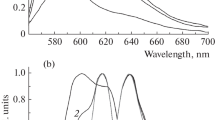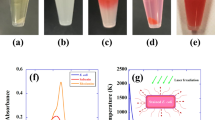Abstract
Eight-cell, zona pellucida-intact mouse embryos were exposed to the following substances or procedures that have been reported to have germicidal effects to determine if the embryos would survive and develop under in vitro conditions: the photosensitive substances hematoporphyrin, hematoporphyrin derivative, 8-methoxypsoralen, 4,5′,8-trimethylpsoralen, and thiopyronine; the enzymes lipase (0.5%), phospholipase C (2 U/ml), chymotrypsin (0.5%), and trypsin (0.5%); pH 5.0; and helium/neon laser light, visible light, ultraviolet A light, and ultraviolet C light. Under the conditions used, embryos were not adversely affected by hematoporphyrin and/or helium/neon laser light; methoxypsoralen and/or ultraviolet A light; lipase; trypsin; pH 5.0 for 20 min; and visible light. Variable results were obtained from hematoporphyrin derivative with laser light. Thiopyronine, trimethylpsoralen in combination with ultraviolet A light, and ultraviolet C light killed embryos, and chymotrypsin and phospholipase C were harmful at 10- and 15-min exposure times, respectively.
Similar content being viewed by others
References
Singh EL: Disease control potential of embryos. Theriogenology 1987;27:9–20
Hare WCD: Cattle embryo-pathogen interactions.In Proceedings International Embryo Movement Symposium, WCD Hare, SM Seidel (eds). Ottawa, Ontario, International Embryo Transfer Society, 1988, pp 116–122
Wrathall AE: Research on pathogens of importance in sheep and goats.In Proceedings International Embryo Movement Symposium, WCD Hare, SM Seidel (eds). Ottawa, Ontario, International Embryo Transfer Society, 1988, pp 123–125
International Embryo Transfer Society: Manual of the International Embryo Transfer Society: A Procedural Guideline and General Information for the Use of Embryo Transfer Technology Emphasizing Sanitary Procedures. Champaign, IL, International Embryo Transfer Society, 1987
Stringfellow DA, Lauerman LH, Nasri KB, Galile PA: Trypsin treatment of bovine ova after in vitro exposure to infectious bovine rhinotracheitis virus or bovine herpesvirus-4. Theriogenology 1990;33:331 (abstr)
Bielanski A, Eaglesome MD, Ruhnke HL, Hare WCD: Isolation ofMycoplasma bovis from intact and microinjected bovine embryos washed or treated with trypsin or antibilotics. J Vitro Fert Embryo Transfer 1989;6:236–241
Riddell MG, Stringfellow DA, Wolfe DF, Galik PK:In vitro exposure of ovine ova toBrucella abortus. Theriogenology 1989;31:895–901
Lipson RL, Blades EJ, Olsen AM: The use of a derivative of hematoporphyrin in tumor detection. J Nat Cancer Inst 1961;26:1–8
Moan J, Pettersen EO, Christensen T: The mechanism of photodynamic inactivation of human cellsin vitro in the presence of haematoporphyrin. Br J Cancer 1979;39:398–407
Dixit R, Mukhtar H, Bickers DR: Destruction of microsomal cytochrome P-450 by reactive oxygen species generated during photosensitization of hematoporphyrin derivative. Photochem Photobiol 1983;37:173–176
Kinsey JA, Cortese DA, Moses HL, Ryan RJ, Branum EL: Photodynamic effect of hematoporphyrin derivative as a function of optical spectrum and incident energy density. Cancer Res 1981;41:5020–5026
Pompei R, Cisani G, Foddis G, Marcialis MA: Kinetics of herpes simplex photoinhibition by haematoporphyrin in both diploid and heteroploid cells. Microbios 1989;58:101–111
Song PS, Tapley KH: Photochemistry and photobiology of psoralens. Photochem Photobiol 1979;29:1177–1197
McKinley MP, Masiarz FR, Isaacs ST, Hearst JE, Prusiner SB: Resistance of the scrapie agent to inactivation by psoralens. Photochem Photobiol 1983;37:539–545
Fowlks WL, Griffith DG, Oginsky EL: Photosensitization of bacteria by furocoumarins and related compounds. Nature (Lond) 1958;181:571–572
Faergemann J, Larko O: Photoxicity of skin microorganisms tested with a new model. Arch Dermatol Res 1988; 280:168–170
Turck G, Selzer R, Chandra P, Ishimoto M: Organic photochemistry of nucleic acids. Photochem Photobiol 1964; 3:369–394
Lochmann ER, Roth R: Thiopyronine and 8-methoxypsoralen sensitized photodynamic effect on DNA synthesis in yeast. Radiat Environ Biophys 1985;24:157–160
Lober G, Kittler L: Selected topics in photochemistry of nucleic acids. Recent results and perspectives. Photochem Photobiol 1977;25:215–233
Wacker A, Dellweg H, Trager L, Kornhauser A, Lodemann E, Turck G, Selzer R, Chandra P, Ishimoto M: Organic photochemistry of nucleic acids. Photochem Photobiol 1964; 3:369–394
Perdran JR, Todd C: The photodynamic action of methylene blue on certain viruses. Proc Roy Soc Lond Ser B 1933; 112:288–298
Hiatt CW, Kaufman E, Helprin JJ, Baron S: Inactivation of viruses by the photodynamic action of toluidine blue. J Immunol 1960;84:480–484
Gentry GA, Randall CC: The physical and chemical properties of the herpesviruses.In The Herpes viruses, AS Kaplan (ed) New York, Academic Press, 1973, pp 45–92
Hafez SM, Liess B: Studies on bovine viral diarrhea-mucosal disease virus. II. Stability and some physico-chemical properties. Acta Virol 1972;16:399–408
Laude H: Hog cholera virus: Sensitivity to hydrolytic enzymes. Ann Rech Vét 1977;8:59–65
Cartwright B, Smale CJ, Brown F: Surface structure of vesicular stomatitis virus. J Gen Virol 1969;5:1–10
Gresser I, Enders JF: The effect of trypsin on representative myxoviruses. Virology 1961;13:420–426
Takehara M, Hotra S: Effect of enzymes on partially purified Japanese B encephalitis and related arbor viruses. Science 1961;134:1878–1879
Hyllseth B: Structural proteins of equine arteritis virus. Arch ges Virusforsch 1973;40:177–188
Fenner F, Bachmann PA, Gibbs EPJ, Murphy FA, Struddert MJ, White DO: Veterinery Virology: Structure and Composition of Viruses. London/New York, Academic Press, 1987, pp. 3–19
Walsh KA, Wilcox PE: Serine proteases.In Methods in Enzymology, Vol. 19. Proteolytic Enzymes, GE Perlman, L Lorand (eds). New York/London. Academic Press, 1970, pp. 31–63
Johnson MA, Chisholm JC, Fleming TP, Houliston E: A role for cytoplasmic determinants in the development of the early embryo. J Embryol Exp Morphol 1986;97(Suppl 97):121
Svehag SE, Leendersten L, Gorham JR: Sensitivity of bluetongue virus to lipid solvents, trypsin and pH changes and its serological relationship to arboviruses. J Hyg Camb 1966;64:339–346
Chagnon A, La Flamme P: Effect of acidity on rubella virus. Can J Microbiol 1964;10:501–503
Gorman BM, Goss PD, Sayers C, Symons MH: Biochemistry of lipid-solvent resistant arboviruses. 26th Ann Rep Counc Queensland Inst Med Res, 1971, pp 8–9
Bachrach HL, Breese SS Jr, Callis JJ, Hess WR, Patty RE: Inactivation of foot and mouth disease virus by pH and temperature changes and by formaldehyde. Proc Soc Exp Biol Med 1957;95:147–152
Author information
Authors and Affiliations
Rights and permissions
About this article
Cite this article
Bielanski, A., Hare, W.C.D. Investigation of some antimicrobial procedures on the in vitro development of early murine embryos aimed toward developing methods for the disinfection of mammalian embryos prior to transfer. J Assist Reprod Genet 8, 24–32 (1991). https://doi.org/10.1007/BF01131587
Received:
Accepted:
Issue Date:
DOI: https://doi.org/10.1007/BF01131587




